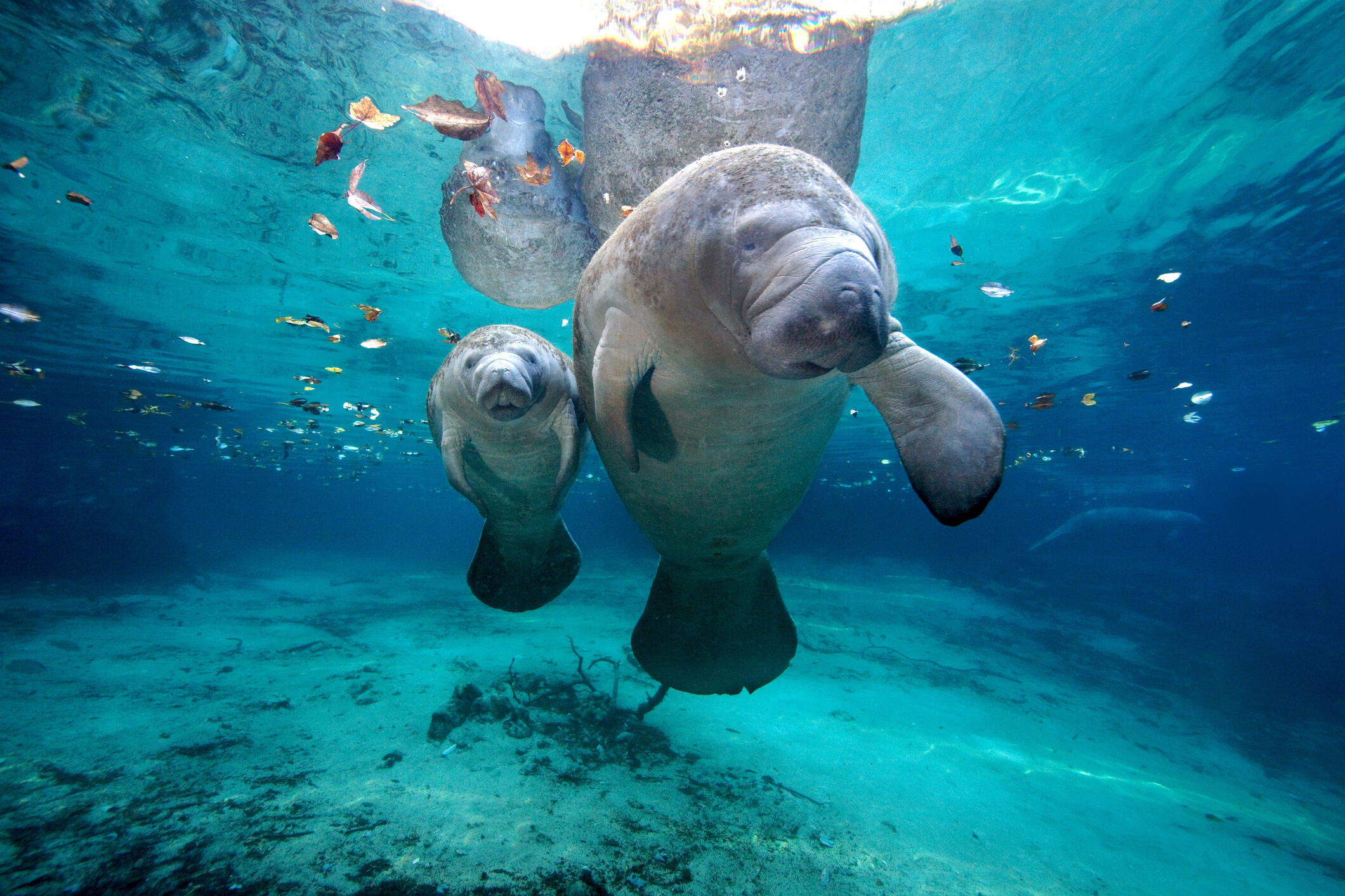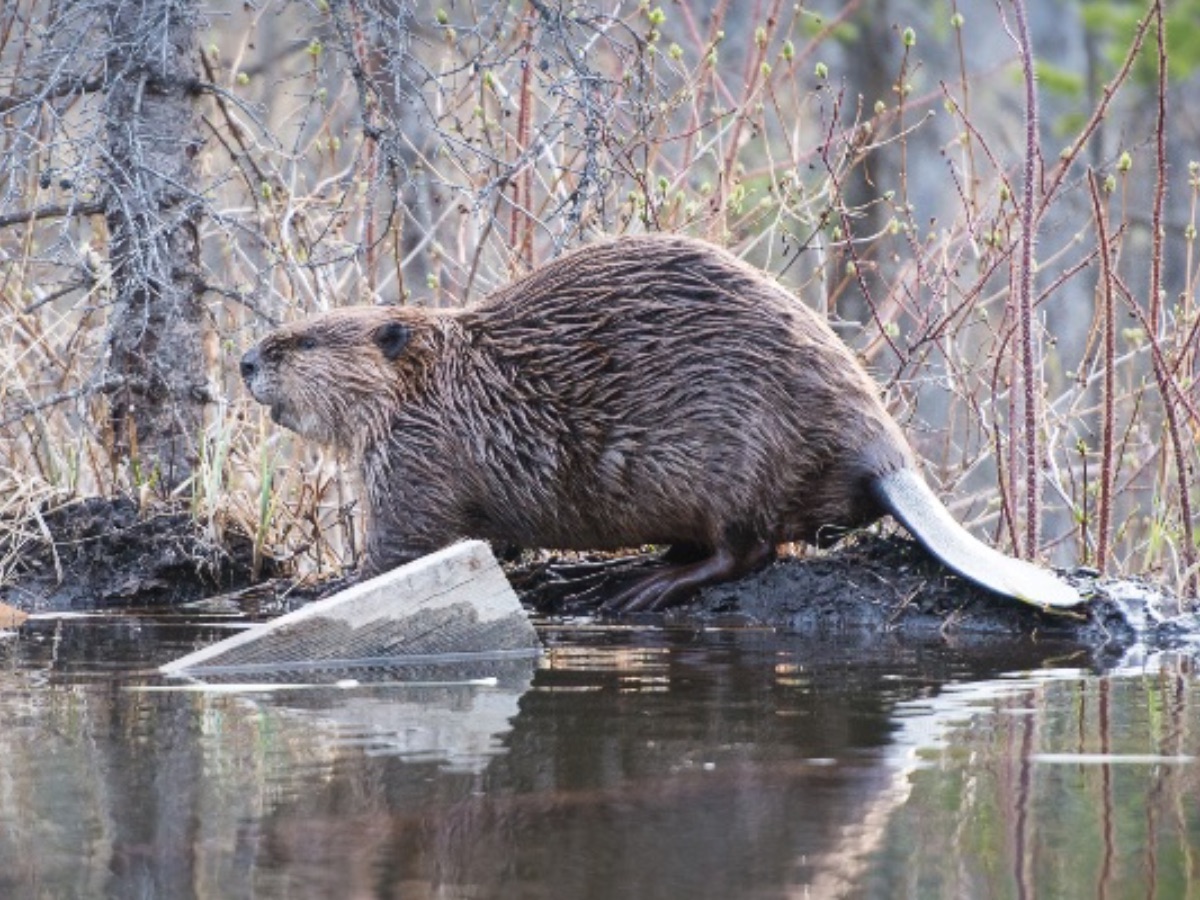Issue 63

West Indian Manatees. Mother and calf at Three Sisters Springs in Florida.
James R.D. Scott via Getty Images Amy Boyer
Amy Boyer
Good news for manatees is good news for climate - In Florida’s Mosquito Lagoon, a recent effort to restore seagrasses has been successful enough to maintain local manatees, who had lost their main food source and were starving. Nearly 90 percent of seagrasses had disappeared, primarily due to phytoplankton blooms that shaded them. Mosquito Lagoon is part of Indian River Lagoon, where recovery of seagrasses was expected to take twelve to seventeen years as of 2022, but researchers are hopeful that Mosquito Lagoon’s resurgence is a sign of a much more rapid recovery. Bringing back seagrasses helps more than manatees. Seagrasses are ecosystem engineers that support enormous numbers of other species, stabilize sediments, and sequester and store twice as much carbon as forests. Florida is funding water quality improvements in the Indian River Lagoon that should boost the virtuous cycle of more seagrasses, cleaner water, and abundant ocean life. To learn more, see our Seagrasses Nexus.
 Claire Krummenacher
Claire Krummenacher
Juneau debuts a carbon offset program benefitting residents – Last year, the city of Juneau, Alaska, received over 1.5 million tourists by cruise ship alone. To offset a portion of the carbon dioxide emissions required to fuel their lengthy passage there, visitors are now being asked to contribute towards the Alaska Carbon Reduction Fund. An alternative to buying credits from distant (and at times unreliable) offset projects, the Fund uses the money to install heat pumps for local residents whose homes are warmed by oil heating systems. Since Juneau’s electric grid relies on hydropower, electricity is both less expensive and less polluting than oil heat, and as a result, the heat pumps save residents hundreds of dollars each month. So far, the Fund has paid for 41 installations and estimates the heat pumps will prevent over 3,000 metric tons of carbon emissions over the course of their fifteen-year lifespans. Some tourism-related companies in Juneau have started including contributions to the Fund in their prices, and the organization is aiming to bring larger cruise ships and major airlines into the program to accelerate its impact on local emissions. To learn more, check out our Offsets Nexus.
 Courtney White
Courtney White
The Man Who Stopped The Desert – On December 3rd, 2023, regenerative farming icon Yacouba Sawadogo died in a hospital in Burkina Faso at age 77. In 2018, he won the Right Livelihood Award – sometimes called the ‘Alternate Nobel Prize’ – for his lifelong dedication to turning barren land into a forest, demonstrating how farmers can regenerate their soil with innovative use of Indigenous and local knowledge. When Sawadego began his work in the middle of a 1980 drought, he was ridiculed for his belief that he could grow trees using a traditional water conservation technique called zai, which involved digging small pits in the soil. Sawadego innovated the practice by digging the pits at different times of the year and filling them with compost and termites, which nurtured saplings and millet, an African staple crop. His quest was deemed quixotic because desertification was on the move in the Sahel, boosted by land-degrading agriculture and climate change. But Sawadogo stopped the desert. He successfully restored a 40-hectare forest containing more than sixty species of trees that is now considered one of the most diverse parcels of land in the entire region. Sawadego’s work is an example of adapting traditional knowledge to solve modern challenges. Other examples include Farmer-Managed Natural Regeneration (FMNR), a practice in Africa that nurtures trees to grow from former stumps, silvopasture, forest farming, and other types of agroecology. Ethnobotanist Gary Nabhan details a variety of traditional practices for drylands in his book Growing Food in a Hotter, Drier Land. You can see videos of agroecology here. See the Agroforestry Nexus and Agroecology Nexus for more information.
 Juliana Birnbaum
Juliana Birnbaum
Charged up about batteries - I started driving an EV a few months back, so I get supercharged thinking about the potential of batteries as a major tool in the set we need to address the climate crisis. In the not-so-distant future, electric cars will routinely have ranges in the high hundreds from batteries that last for decades and recharge in minutes. Climate activist Bill McKibben started 2024 with good news about energy storage accompanied by encouraging charts in his reporting series The Crucial Years. Battery technology has improved in leaps and bounds over the past decade due to rising energy density: the amount of energy stored in a material per unit volume. Research and development in the field of batteries stagnated during the greater part of the 20th century but began to pick up as the demand for consumer electronics soared, eventually giving us batteries so energy-dense they could power vehicles. Declining costs have accelerated uptake, which speeds innovation, creating a “cycle of self-perpetuating progress.” Manufacturing capacity is rising fast, and today’s annual commissions of new factories are more than eighteen times those of five years ago. Yet the lithium-ion batteries that have dominated the market have a significant climate impact from the mining and processing of necessary materials, paving the way for new technologies such as sodium-ion batteries. This past week, top global battery manufacturer BYD (which recently topped Tesla to become the world’s largest EV maker) broke ground on its first sodium-ion battery plant.

|
|
Beavers are a keystone species whose activities support thousands of plant, animal, and fish species and provide ecosystem services for humans.
Credit: Jillian via Adobe Stock Images |
 Scott Hannan
Scott Hannan
Beavers released into the wild for the first time in 70 years - The California Department of Fish and Wildlife has released a family of seven beavers into the wilderness of Plumas County in an effort to re-establish a breeding population, and they have built their homes for the winter, signaling a successful transition to the wild. This is the first time in over 70 years that the state has worked to restore beaver populations, with the hope that a thriving beaver community will help maintain the mountain meadow ecosystem. There is an increasing awareness of the key role that beavers play in maintaining a healthy ecology, from enhancing water storage and erosion control to habitat restoration, all of which are key factors in building climate change resiliency. This awareness includes an AI-driven beaver pond satellite identification system to help better understand where beavers are and where they’re needed. The WATER Institute at the Occidental Arts and Ecology Center and their Bring Back the Beaver lobbying campaign are leading the way in advocating for the importance of beavers' role in restoring and maintaining clean water within the state. They are shifting the awareness from managing beavers as a nuisance to human activities like farming and construction to partnering with them in healing degraded ecosystems. It is currently estimated that California’s population of beavers is at about 10% of their historical numbers, but with continued effort, these allies in regeneration can be reintegrated into a landscape of renewed health and vitality. To learn more, see our Beavers Nexus.
Take Action on Nexus
Learn how to support pastoralists as vital practitioners of a cultural and land management way of life that is resilient and has numerous social, environmental, and climate benefits in our Pastoralism Nexus.
Support our work
We rely on the generous support of our fellow regenerators! Please consider making a one-time or recurring donation to keep Project Regeneration and The Waggle going.
Want the Waggle coming to your inbox instead? Click Here to Subscribe!
